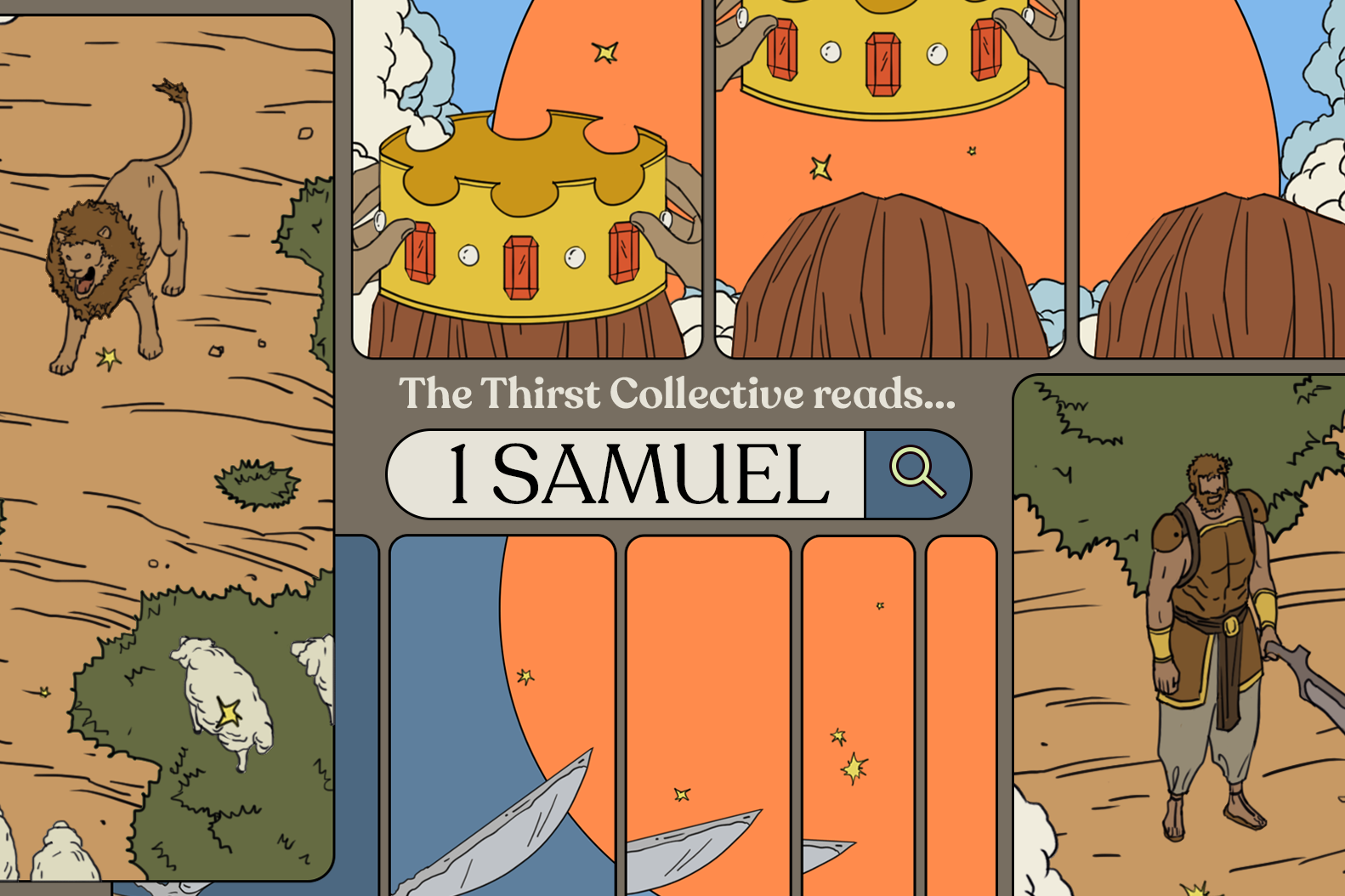“The Gospel of Jesus Christ is going through a big change. Not in terms of the content, but the way it’s being presented.”
Speaking on the second day of the X3 Creative conference, Raphael Foo, founder of Assembly Asia, addressed how the Church can continue presenting an unchanging Gospel to a changing world.
Citing Singapore as an example, he described that just a few generations back, the Gospel was pretty much unheard of in our land, making it easier to share it with others and lead them to Christ.
But in this day and age, most people would already have heard the Gospel, maybe even multiple times, and still remain unconvinced.
“I often hear it said that it’s so hard for the Church to reach new people nowadays,” Foo said. “But if you know that we have a God who is kind and good and never caught off guard, then you’d know that in the community of God, there already exists the tools to tackle a new world.”
This is why Assembly Asia’s mission is to equip a new generation for the Gospel by connecting global creative ministries with local churches. Part of the non-profit’s work includes bringing creative individuals from around the world into Asia. These have included artistes such as Pat Barrett, Leeland and for KING & COUNTRY.
CALLING OUT THE CREATIVES
“’Creative’ can apply to everybody. If you’re a finance person, you can be very creative in the way you do finance,” the 29-year-old hedge fund manager said. “But God uses the word ‘craftsmen’. People who create with their hands.
“That’s a little bit different from being creative. You cannot generalise them. God created different people for different purposes.”
In Zechariah 1:18-20, Zechariah receives a vision of the End Times, where four horns were described to terrorise the Kingdom of God.
“But God goes on to clarify and show a solution to these four horns. He chooses four craftsmen to counter the horns.”
“Then the Lord showed me four craftsmen. I asked, ‘What are these coming to do?’
“He answered, ‘These are the horns that scattered Judah so that no one could raise their head, but the craftsmen have come to terrify them and throw down these horns of the nations who lifted up their horns against the land of Judah to scatter its people.’” (Zechariah 1:20-21)
THE NEED FOR CREATIVE EVANGELISM
Referencing church history, Foo went on to explain that creative arts used to be the primary way to communicate a message. “If you go to the Sistine Chapel of the Vatican, you’d see artwork everywhere,” he offered.
So how can a creative contribute to the world and to the Church? Foo suggested two methods of evangelism: overt preaching and covert sharing.
When the Pharisees asked Jesus for a sign to convince them He was the Messiah, Jesus responded in a strange way: He said that the “men of Nineveh” and the “Queen of Sheba” would rise up in judgment against them because both believed despite having not seen God in the flesh, as they had.
“He answered, ‘A wicked and adulterous generation asks for a sign! But none will be given it except the sign of the prophet Jonah. For as Jonah was three days and three nights in the belly of a huge fish, so the Son of Man will be three days and three nights in the heart of the earth.
“The men of Nineveh will stand up at the judgment with this generation and condemn it; for they repented at the preaching of Jonah, and now something greater than Jonah is here. The Queen of the South will rise at the judgment with this generation and condemn it; for she came from the ends of the earth to listen to Solomon’s wisdom, and now something greater than Solomon is here.” (Matthew 12:39-42)
He was referring to the Ninevites who repented after listening to Jonah’s warnings and the Queen of Sheba who acknowledged the God of Israel when she saw the works of Solomon (1 Kings 10:4-9).
“There is the straight-up preaching like what Jonah did to the Ninevites – overt preaching – and then there’s covert sharing,” Foo said. “That is, to seed people with the ideas of the Gospel.”
He continued: “The Queen of Sheba didn’t just listen or hear about King Solomon’s wisdom – she saw all the things that were created in his palace.
“The palace that had been built, the seats of his officials, the cupbearers, the burnt offerings. And she was convinced that there must be a God.” This is what he believed the creatives are called to do.
Skipping ahead to Matthew 13, he further illustrated the importance of covert evangelism.
“Matthew 13 starts off with the parable of the sower and the seed. And we know that Jesus was trying to say that the same Word of God can come to different conditions of the heart and produce different outcomes.
“Then the disciples ask Jesus why He told parables. Basically, they were asking Jesus, ‘why don’t you straight-up preach to them the Gospel? You just came from the Sermon on the Mount, it shouldn’t be a problem for you. Why are you wasting your time telling stories?’”
This sounds much like a common accusation against Christians who do creative work.
“People always say, ‘you’re a creative, why don’t you create in the church?’ or ‘why is it always so indirect?’ Like unless you’re doing it as overtly as Kanye (West), you’re not considered to be applying your gifts correctly.”
But Jesus’ answer to his disciples in Matthew 13:11-14 was very interesting. Reading from The Message version of the verse, Foo explained that as Christians, we have been given insights and understanding into God’s Kingdom. However, people in the world may not have these revelations because they do not even have a ready heart.
“He replied, ‘You’ve been given insight into God’s kingdom. You know how it works. Not everybody has this gift, this insight; it hasn’t been given to them.
“Whenever someone has a ready heart for this, the insights and understandings flow freely. But if there is no readiness, any trace of receptivity soon disappears. That’s why I tell stories: to create readiness, to nudge the people toward receptive insight.” (Matthew 13:11-14, MSG)
What this means is that we can give people the Word straight up, but if they don’t have a ready heart, they’ll just shut you down.
“Think about it,” Foo urged. “If you tell someone there’s a good Father in Heaven and that God loves them, but they grew up with a difficult father, they will just impose what they know of a father on God.”
Instead, what Jesus did was to tell stories that introduced people to Kingdom principles and concepts, so that when He told them the plain Word of God, they were more ready to receive.
“Different situations of the heart can be changed by the stories we read,” Foo said, referencing The Message version of Matthew 13 again. “That’s why Jesus told stories. To create readiness and nudge people towards receptive insights.'”
BACK TO THE CORE
So how can the creatives of today create works that tell stories of who Jesus is?
Simply by following the example of God.
“God creates things out of His nature. For example, when God said, ‘let there be light’ at the beginning of the world, it was because He is light.”
Similarly, creatives create from their own nature. So in order to produce work in line with the Father’s heart, Foo suggested starting every morning reading the Bible and internalising what God is like before we do any creating ourselves.
“As a creative, you create from a place deep within your spirit. So if your spirit is resourced, it will come out in your work.”
Wrapping up his session, Foo reminded the audience of the importance of biblical-based content.
“There is content competition in the world we live in today that competes with the Word of God,” he concluded. “The Bible says the worries of this life and the deceitfulness of wealth – things you input from what you read online – come into your life and choke you.”
“So there must be creatives like you to rise up and make the Word outstanding.”









